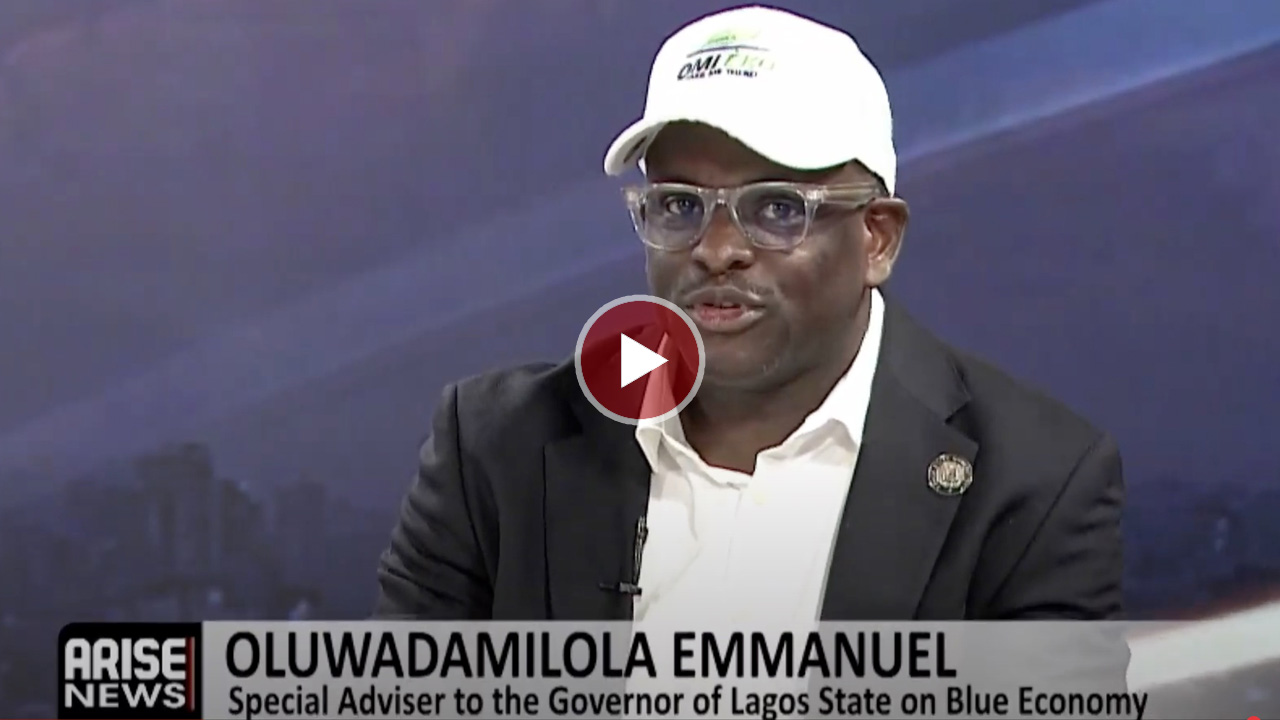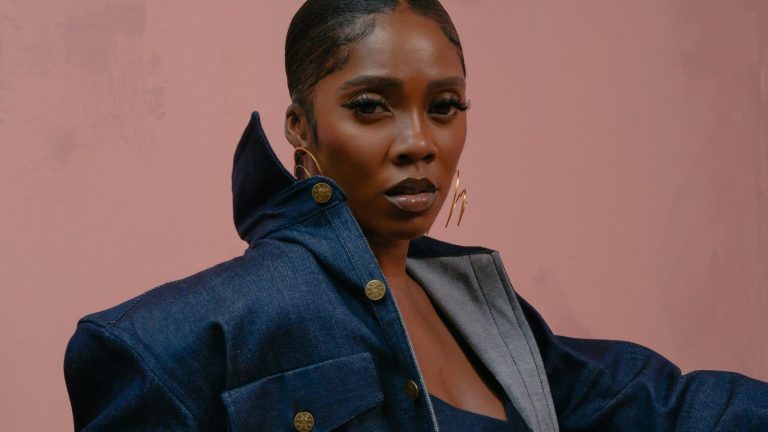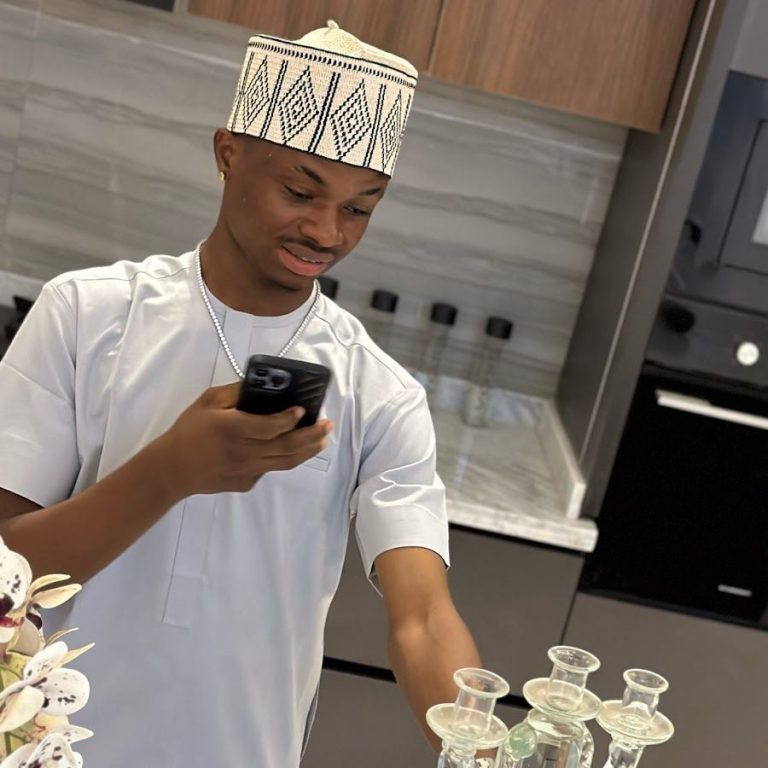

Lagos State is set to transform its waterways into a fully formalised and sustainable transport system through the Omi Eko project, an ambitious initiative that will introduce 70 electric ferries, upgrade jetties, and modernise water transport infrastructure.
Speaking on ARISE News on Friday, the Special Adviser to the Governor of Lagos State on Blue Economy, Oluwadamilola Emmanuel, said the project is designed to regulate and expand water transportation across Lagos.
“The Omi Eko project really is to formalise water transportation in Lagos State. Currently, as we have it, water transportation is largely dominated by the informal sector, and what we intend to do with the Omi Eko project is now fully formalise it, just like the way you have the BRT system in Lagos,” he said.
He explained that the project would attract both local and international investment to strengthen the sector.
“The whole idea of Omi Eko is to ensure that we can drive sustainable investment, and it’s a blended investment of both foreign and local investors, but largely a foreign investment initiative, which will see the influx of over 70 electric ferries. It’s going to see the upgrade of 20 jetties and terminals, the dredging of 140 kilometres of the inland water, which is about 70 percent of the inland waterways in Lagos State,” Emmanuel stated.
The special adviser to Lagos State government also revealed that a dedicated fund has been created to support local operators.
“It’s also going to see capacity building for all the stakeholders, including LASWA, and most importantly, also a fund for the existing local boat operators because when these kinds of initiatives happen, what usually happens is that you leave out the local boat operators and then they’re struggling and you want to kick them out.
But we have a fund which is going to ensure that we take care of that.”
On integrating the informal sector, Emmanuel said the government had encouraged boat operators to form cooperatives to improve coordination.
“What we told them to go and do was because they were all individual operators, I mean there’s no way, there are about 356 of them, we’re like there’s no way anybody’s going to support you this way. So what we got them to do is go form cooperatives. So now as I speak today, they formed four cooperatives.”
According to him, these cooperatives will directly operate the ferries and jetties under the Omi Eko scheme. “It’s those four cooperatives we would deal with as Lagos State to ensure that these cooperatives are then the ones that are able to then operate the jetties and also the ferries which this Omi Eko project is going to also purchase.”
Emmanuel also announced that the state has secured full funding for the project. “Today’s actually groundbreaking because we’ve actually secured the funding. All of the funding has actually been secured. It will be a five-year project, but then within now and the next two years, we intend to launch phase one,” he disclosed.
He added that the project will be seamlessly integrated with other modes of transportation in Lagos. “The Cowry Card will be used on all of these different modes, and that’s how we intend to integrate it as well. It will help with the fare structure because the truth of us is that water transportation compared to other modes is slightly more expensive because of the cost components, but the Cowry Card is going to sink.”
Explaining the financing structure, Emmanuel said, “The state will own its own infrastructure, right, the ferries. It’s more like a rent to operate. So the maintenance is on the state government. All they’re doing is taking the government assets, running and making money. And the truth of the matter is about 70 percent of each ticket goes to the operator. So it will be a rent to operate on the ferries. That’s what we’re going to run the system.”
He confirmed that the funding would come as a loan with a long repayment plan. “It’s going to be a loan, and we intend that because obviously we have repayment as well, because there’s a seven-year moratorium period as well for us to pay back the money. So it’s going to be a loan, and then we give them, of course, we’ll have the next sort of 10 years for them to be able to ensure that they’re paying that loan.”
Highlighting the sustainability plans, Emmanuel said the project will involve global partners focused on climate-friendly innovation. “We have three funding partners — the AFD, the EIB, which is European Investment Bank, and we have the EU. The only reason why the EU got involved in this project is because we are going to be building climate-friendly infrastructure, and we’re going to be getting climate-friendly ferries. So it’s going to be hybrid electric ferries.”
He also revealed that foreign experts will train local capacity to ensure long-term maintenance and operations. “They’re going to come and train the local capacity for the next two years, and then the handovers and skill transfer. A lot of training is involved in this because we want to ensure that the local boat operator in the next two, three years is able to be aware of all the advanced and modern ways of handling and maintaining those boats.”
Addressing environmental concerns, Emmanuel said the ferries are built to operate smoothly even through water hyacinth. “The good thing about the ferry is that the ferries sail on water hyacinth. Water hyacinth will not impede the ferries at all. The ferries ride on water hyacinth without any issues whatsoever.”
He added that the state is partnering with companies to recycle water hyacinth. “We partnered with a company called Metimeth, and Metimeth transforms water hyacinth into marketable products. She takes them and turns them into arts and crafts stuff. And also, we even do it into something called biochar, which is like manure for farms as well.”
On the project’s vision, Emmanuel said: “There’s a time lapse because, like I said, it’s groundbreaking. But within the next two years, we expect the influx. The vision would be to see all our staff coming by ferries in the morning, getting down, and then, of course, taking your last mile connectivity.
But beyond that as well, the vision really is to have that intermodal transport system. That’s what we want to see. And of course, it’s safe, it’s accessible, and it’s easy for people to use, and then beyond just transportation, also for trade and, of course, tourism as well on the weekends.”
Faridah Abdulkadiri



